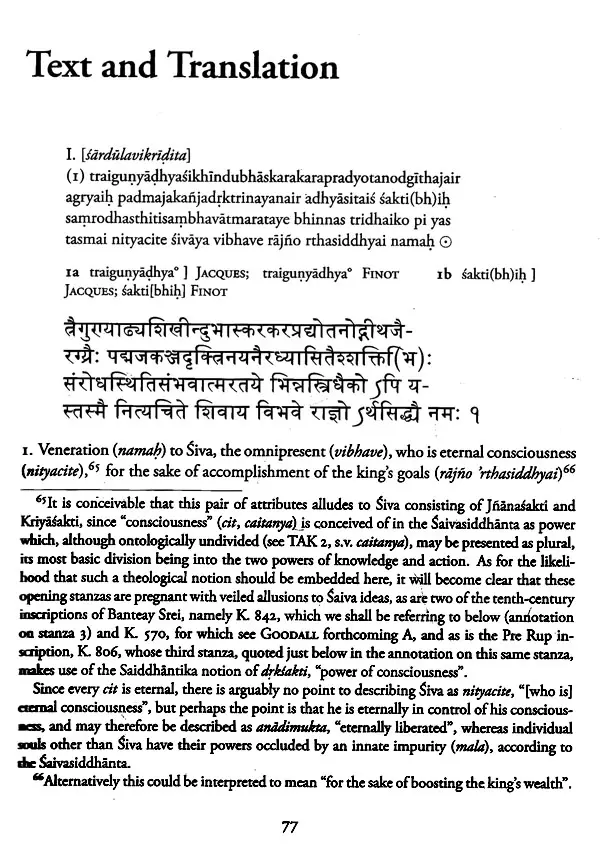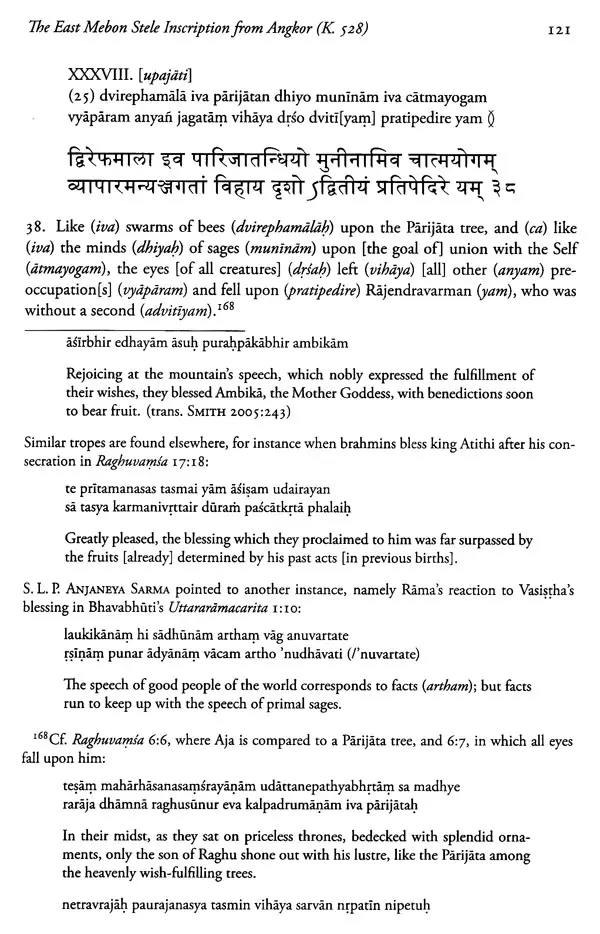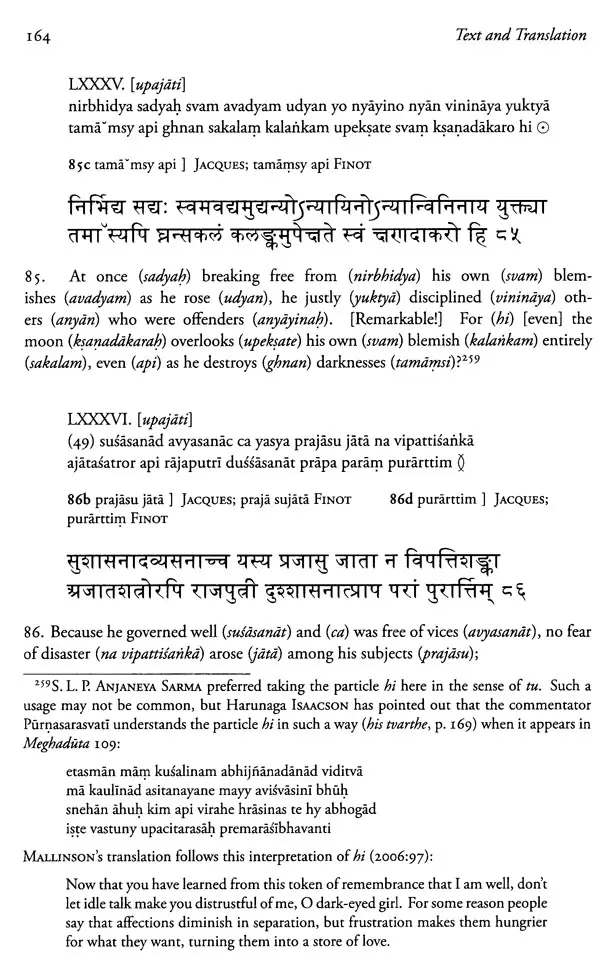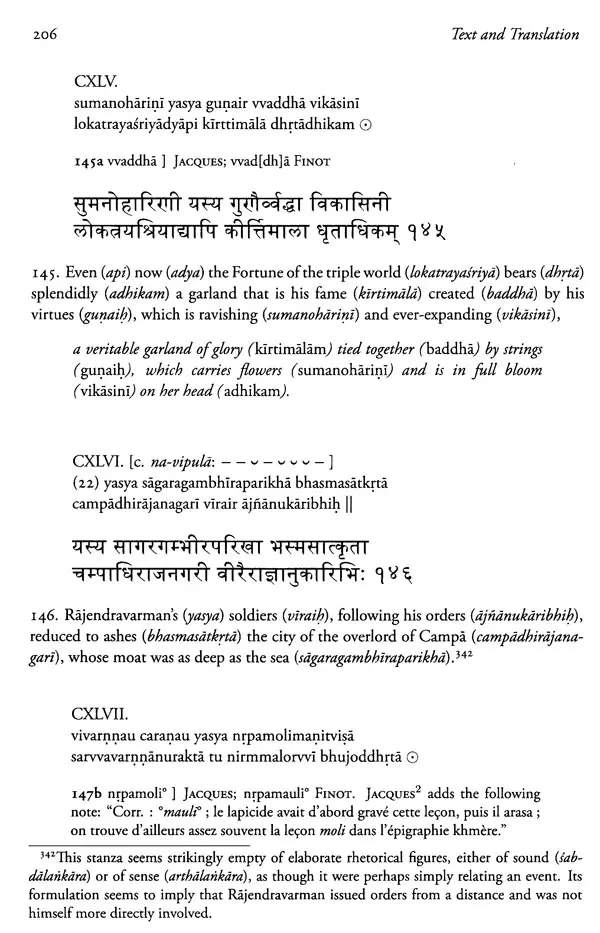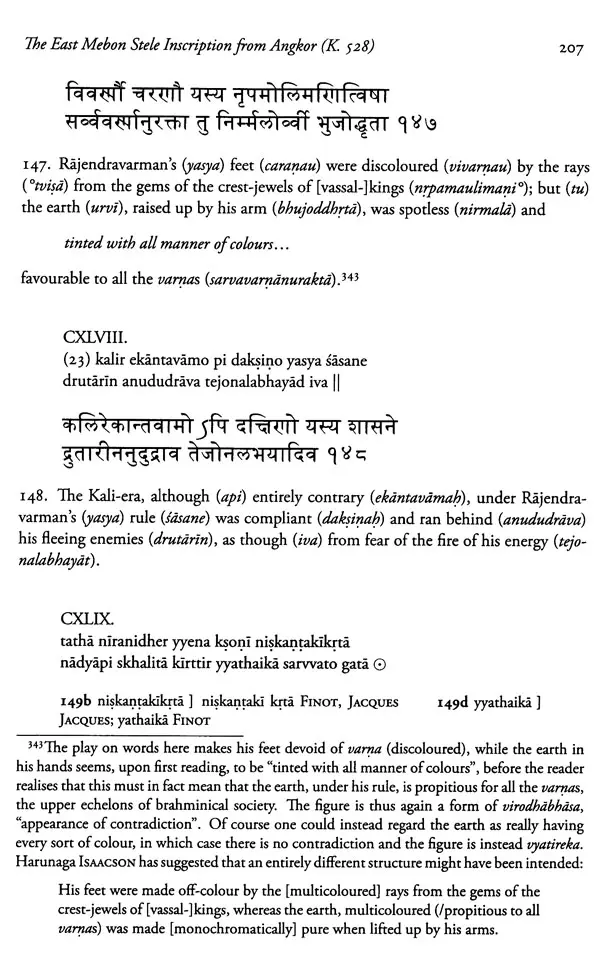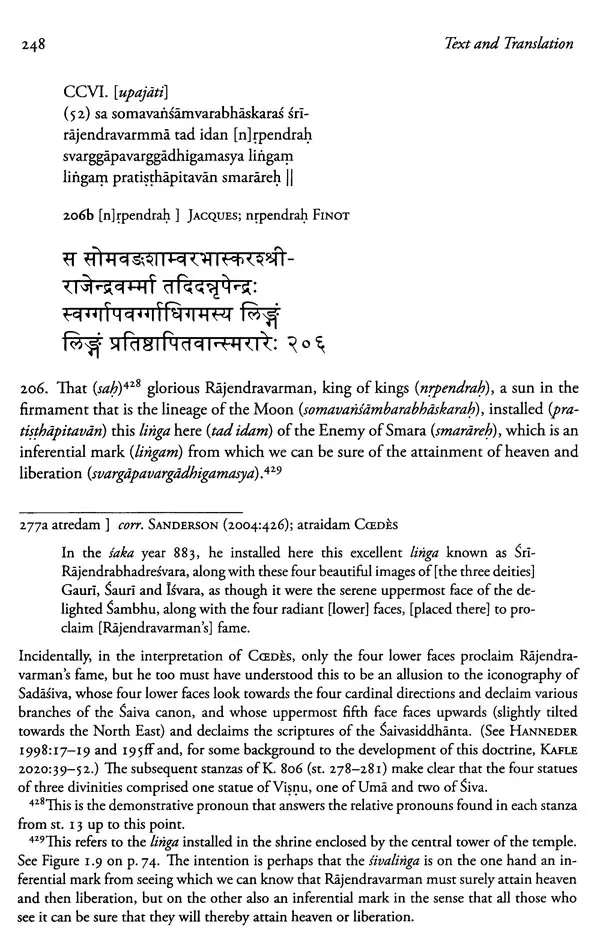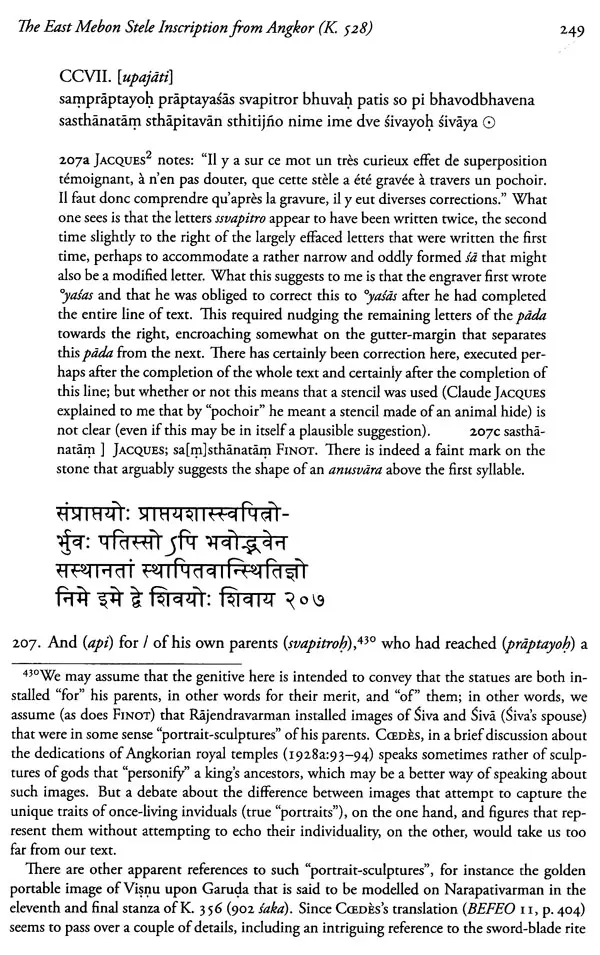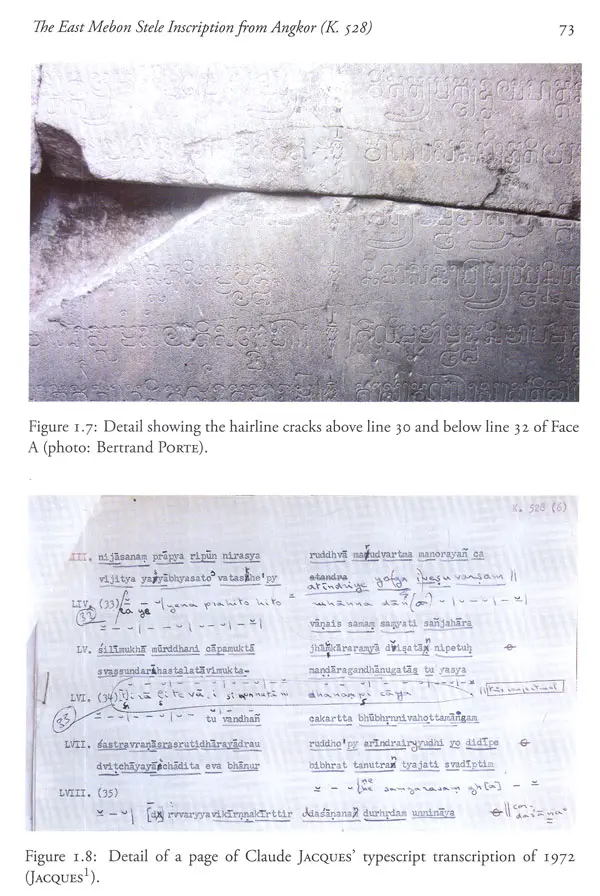
The East Mebon Stele Inscription From Angkor (K. 528)- A Sanskrit Eulogy of The Tenth - Century Khmer Sovereign Rajendravarman
Book Specification
| Item Code: | UAX492 |
| Author: | Dominic Goodall |
| Publisher: | Institut Francais De Pondichery |
| Language: | Sanskrit and English |
| Edition: | 2022 |
| ISBN: | 9788184702460 |
| Pages: | 331 (Color Illustrations) |
| Cover: | PAPERBACK |
| Other Details | 9.50 X 7.50 inch |
| Weight | 660 gm |
Book Description
The epigraphy of the ancient Khmer kingdom centred in what is today Cambodia comprises about 1500 inscriptions written in Sanskrit or Old Khmer or both between the sixth and the fourteenth centuries CE. Remarkable as much for their graceful calligraphy and layout as for their elegance and erudite sophistication, these extraordinary documents have hitherto primarily been mined for historical data rather than savoured for their poetry. The present volume contains a substantially improved edition and annotated English translation of the second longest Sanskrit inscription of the Khmer-speaking region, a stela that records the creation of a five-towered temple dedicated to Siva by the tenth-century Khmer ruler Rajendravarman. For the benefit of enthusiasts of kavya, the text is given also in Devanagari.
After studies in Oxford and Hamburg, Dominic Goodall was head of the Pondicherry Centre of the EFEO from 2002 to 2011. He has published critical editions of Saiva works and of classical Sanskrit poetry. During four years in Paris, he gave lectures on Indian and Cambodian Sanskrit literature at the Ecole pratique des hautes etudes (EPHE), before returning to Pondicherry in 2015, where he is now again head of the EFEO’s centre. In 2016, he was elected foreign corresponding member of the Academie des Inscriptions et Belles-Lettres.
An enormous double-sided stela was dug up in pieces in October 1922 by Henri MARCHAL from the Eastern Gopura of the great brick temple to Siva known as the Eastern Mebon, a temple that covered what was once an island in the Eastern Baray, the huge tank whose ancient name echoes that of the ninth-century king Yasovarman: the Yasodharatataka.
The text is entirely in Sanskrit verse, consisting primarily of a long pacan of praise of Rajendravarman (r. 944-968CE), prefaced by elegant and theologically sophisticated invocations of Siva and Gauri and of other deities (stanzas 1-7), and followed by an account of the king's religious endowments, including the installation of a linga of Siva in the Mebon temple (stanzas 201-218).
Louis FINOT, who published an edition and translation of this inscription in the Bulletin de l'École francaise d'Extreme-Orient in 1925, was less than enthusiastic about its merits:
The true object of the deed only covers 10 verses (CCI-CCX): the rest of the stela is filled with laudatory formulae and final curses. The only important pieces of information that we may glean from the interminable panegyric of Rajendravarman concern his antecedents.
Certainly the great Mebon inscription does not provide much material for an event driven regnal history of the Khmers in the tenth century; but it is nonetheless a rich source of cultural history. It alludes, for instance, to the king's having received tantric initiation in its punning twentieth stanza, and it attests to an awareness of Indian literary works and of Indian evolutions in poetic taste that are in marked contrast with the archaism of pre-Angkorian poetry. Most notable is the prevalence of intricate word-play, allowing many stanzas to have at least two levels of meaning: such dense punning had no place in the fifth-century poetry of Kalidasa, whose influence deeply imbues seventh-century Cambodian Sanskrit compositions. In effect, we can see that Khmer poetry in Sanskrit was evolving in tandem with Indian poetry in this period. and not wholly independently.
Standing on an artificial island in the Eastern Baray, the vast tank once known as the Yasodharatataka, inside Angkor's archeological park is an imposing temple of laterite, sandstone, brick and stucco surmounted by five towered sanctuaries arranged in quincunx whose images were consecrated in 953 CE. We know this date from the conclusion of the huge inscribed stela that was unearthed in fragments in the 1920s from where it had earlier stood in a roof-tiled lateral wing of the cruciform entrance space inside the eastern gopura of the outer enclosure wall (see Figure 1.10). That same document, along with a great deal else besides, for it comprises 218 stanzas in Sanskrit, also tells us that the temple was constructed by Rajendravarman, the then "emperor" of the Khmers, and that it housed, presumably in its central tower, a linga called, after its patron, Rajendresvara, and, in the surrounding four towers, statues of Visnu, Gauri, Girisa and Brahma. The Mebon temple and its inscription is sometimes a little over looked in favour of one of its closest neighbours, which was built and consecrated by the same sovereign just less than ten years later, namely the still larger temple of Pre Rup, with a much better preserved, more polished and still longer foundational inscription of 298 Sanskrit stanzas (K. 806), which was edited and translated by George Ccedes. This book, however, is dedicated to the foundational inscription of the Eastern Mebon temple precisely because it has been relatively neglected. This neglect might be partly explained by its text being shorter and less magnificent, but it is probably principally a consequence of its being more damaged and having been, furthermore, edited and translated somewhat cursorily.
**Contents and Sample Pages**



